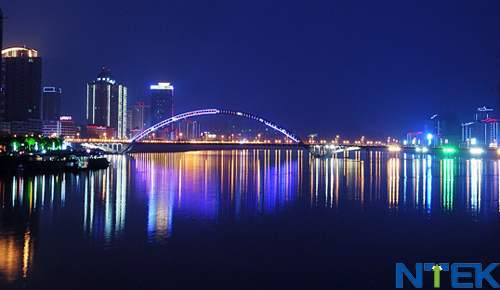 Hot Line
400-800-6106
Hot Line
400-800-6106

LED is an energy-saving and environmentally friendly product, whether it is used for LED packaging or LED finished lighting. If your product does not pass the corresponding certification, it will lower the product score and even bring to the enterprise Unnecessary loss. NTEK, as a professional and authoritative third-party testing and certification consulting service organization, can provide LED product testing and certification services for the majority of lighting companies. So, what are the common LED product certifications? I compiled some common certifications about LED products for your reference.
CCC certification
The full name of CCC certification is "compulsory product certification system", which is a product conformity assessment system implemented by governments of various countries in order to protect the personal safety and national security of consumers, strengthen product quality management, and comply with laws and regulations. The so-called 3C certification is China's compulsory product certification system.
CE certification
The "CE" mark is a safety certification mark and is considered a passport opened by the manufacturer and entered the European market. CE stands for CONFORMITE EUROPEENNE. All products bearing the "CE" mark can be sold in the EU member states without having to meet the requirements of each member state, thereby achieving the free circulation of goods within the EU member states.
FCC certification
FCC certification is established by the Federal Communications Commission (FCC) in 1934 by COMMUNICATIONACT. It is an independent agency of the US government and is directly responsible to Congress. The FCC coordinates domestic and international communications by controlling radio, television, telecommunications, satellite and cable.
UL certification
UL is short for Underwriter Laboratories Inc. The UL Safety Test Institute is the most authoritative in the United States, and it is also a large non-governmental organization engaged in safety testing and identification in the world. It is an independent, non-profit, professional agency that conducts tests for public safety. It uses scientific testing methods to study and determine whether materials, devices, products, equipment, buildings, etc. are hazardous or harmful to life and property; determine, write, and issue corresponding standards and help reduce and prevent life Data on property loss, and conduct fact-finding business.
CB certification
The CB system (IEC system for conformity testing and certification of electrical products) is an international system operated by IECEE. The certification bodies of IECEE member states test the electrical products' safety performance based on the IEC standards. The test results are the CB test report and CB. The test certificate is mutually recognized in the IECEE member states. The purpose is to reduce the barriers to international trade that arise from having to meet different national certification or approval criteria.
GS certification
The meaning of GS is that the security is certified, and it also means German security. GS certification is a voluntary certification based on the German Product Safety Law (GPGS) and tested in accordance with the EU's unified standard EN or German industrial standard DIN. It is a recognized German safety certification mark in the European market.
VDE certification
VDE testing organization and certification association is a subsidiary of the German Electrical Engineers Association. It was established in 1920. As an internationally recognized safety testing and certification institution for electronic appliances and their components, it enjoys a high reputation in Europe and even internationally. . At present, the demand for VDE certification from customers around the world is increasing. VDE test institutes and certification associations conduct 18,000 tests per year for approximately 2200 German customers and approximately 2700 foreign customers according to current European and international standards. Today, more than 200,000 products worldwide have VDE safety certifications.
CSA certification
CSA is the abbreviation of Canadian Standards Association. Founded in 1919, it is the first non-profit organization in Canada to develop industry standards. Electronics, electrical appliances, and other products sold in the North American market need to obtain safety certification.
PSE certification
PSE certification is a compulsory safety certification in Japan. It is used to prove that electrical and electronic products have passed the safety standards tests of the Japanese Electrical and Material Safety Law (DENAN Law) or international IEC standards. 498 products entered the Japanese market. Must pass safety certification. Among them, 165 types of A products shall obtain the diamond-shaped PSE mark, and 333 types of B products shall obtain the circular PSE mark.
Energy Star Certification
Energy Star is a government program jointly launched by the US Department of Energy and the US Environmental Protection Agency to better protect the living environment and save energy. In 1992, the United States Environmental Protection Agency participated in the earliest promotion on computer products. There are now more than 30 categories of products included in this certification, such as household appliances, heating / cooling equipment, electronics, lighting products, etc. Currently, the most popular products in the Chinese market are lighting products, including energy saving lamps (CFL) , Lighting (RLF), traffic lights and exit lights.
SAA certification
Implementation of SAA certification system, while implementing EMC requirements, Australia's national standard certification mark for EMC requirements for electronic products. At this stage, the SAA has adopted the IEC system standards. The main differences between SAA products and EN products;
1) The voltage is AC240V50Hz;
2) Use a flat 8-pin flat or 3-pin flat 8-pin plug;
3) Use SAA certified round wire;
HK certification
VDE / SEMKO / TQM certification is required for lamp holders, wires, and plugs. The entire lamp is tested according to the EN60598 standard and a statement of compliance can be signed to sell it. Voltage AC220V 50Hz, BS standard plug, EMC requirements are currently not enforced.
Japan JIS certification
Japan's DENTORL Act (Electrical Device and Material Control Act) stipulates that 498 products must pass safety certification to enter the Japanese market. Among them, 165 types of A products should obtain T-MARK certification, and 333 types of B products should obtain S-MRK certification. Lamps, that is, civil or household products that use light sources, are Class B products and are required to be manufactured in accordance with JIS standards.
South African SABS certification
Adopt the IEC60598 system standard: the grid voltage is AC220V ~ 250V 50Hz; the plug is a South Africa three round pin plug; EMC requirements for electronic products.
BS (UK) certification
Adopting IEC60598 system, the national standard is BS: the voltage is AC240V 50Hz; using a square three-pin plug; B15, B22 bayonet lamp heads are available.
RoHS certification (standard-compliant certification includes SGS certification)
Restriction of the use of certain Hazardous Substances, which is the meaning of RoHS. In short, is your product environmentally friendly? This is an important certification for LED packaging products.